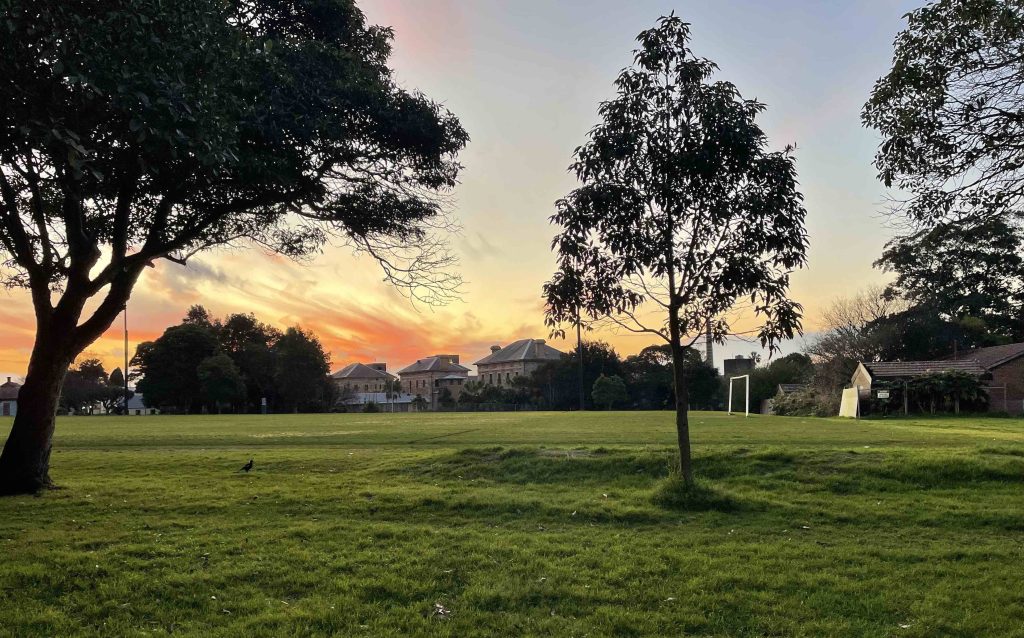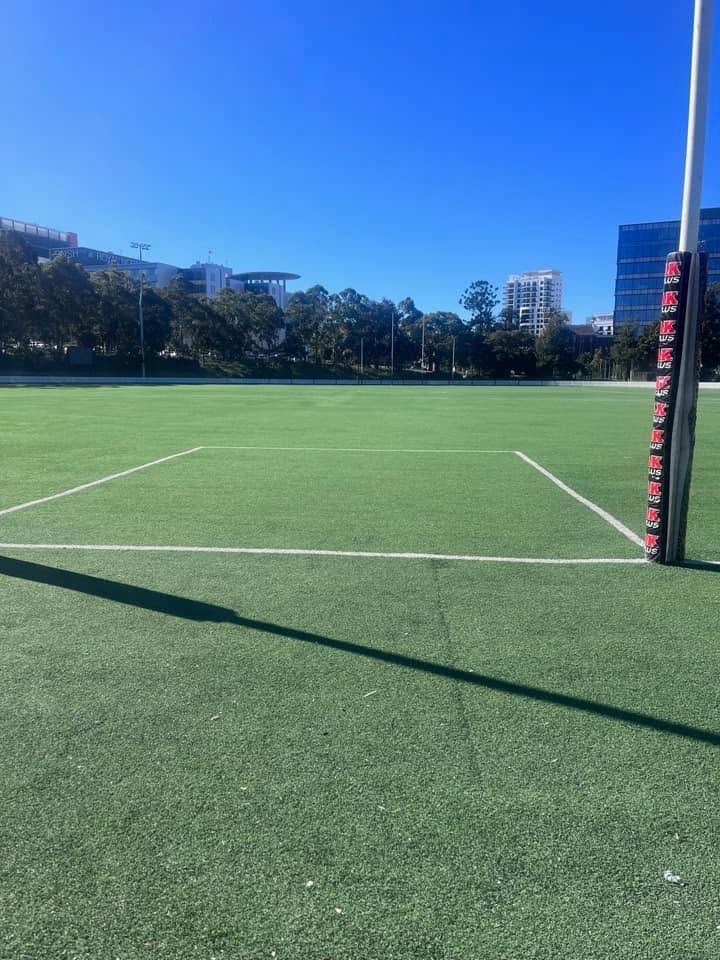On Tuesday night (13 August) the Inner West Council voted 8-7 to proceed with the design of two plastic-grass fields at Callan Park. The vote was purely on party lines with the Labor majority voting automatically as a bloc. They were unmoved by this closely reasoned appeal to Labor values emailed to all Councillors by a local resident. All the independent and Greens Councillors voted against the motion. Whether this proposal proceeds any further will be up to the new Council elected September 14. It’s worth noting that Labor Councillors on nearby Lane Cove Council voted against the installation of a plastic grass field on the Bob Campbell oval in 2022 and there is continuing debate within Labor ranks over support for plastic grass fields on public open space.
Open letter to Inner West Councillors,
I would like to register my deep concern about the proposal of synthetic turf in Callan Park. Despite it being one of the most talked about local issues prior to an election, it is not listed as a topic for discussion on your website (‘Have your Say“) and, if the last two council meetings are anything to go by, Labor councillors go through the motions of allowing opponents to speak, but then proceeding to vote en bloc without even considering the proposed amendment of an environmental impact study. In the absence of a local council survey on this issue, I would like to put my objections on record this way.
I find it hard to understand how this proposal could be aligned with Labor values when it:
a) essentially privatises public land (it will be monopolised by a minority who pay high membership fees for the privilege, and may also generate income for the club if the ground is hired out)
b) ignores environmental and health concerns regarding the loss of biodiversity, the destruction of a natural landscape, heat radiation and the leaching of ‘forever chemicals’ and microplastics into our waterways. Noone has addressed the question of how this synthetic turf will be disposed of sustainably or replaced after a decade of heavy use.
c) divides a community space which has been harmoniously shared for decades by recreational users including cricketers (who would lose their adult-sized field), dog walkers, picnickers etc. The ugly fence that would divide the space not only obstructs the natural vista but shuts out other users. Dog walkers can’t safely access the unlit remainder of the park on winter evenings, and this hasn’t been acknowledged. Both of these fields provide safe, well-lit recreational spaces in the evenings and open space for dogs to run and play together. Cricketers have been enjoying the breezy waterside field with its shady jacarandas and beautiful aspect for over a hundred years. Currently, only one group of local users is being listened to. How is this a democratic approach? The argument that the remaining ‘98%’ of space is freely available to other users, is just not true.
This issue has become a deal breaker for me and I can’t, in conscience, vote for Labor, despite some of the admirable things I have seen the council achieve recently. The only voices I have been able to count on in acknowledging the local distress and anger about this proposal are those of the Greens and Independents, so they will have my support at the coming election.
Callan Park is a unique heritage space, treasured by the local community with expansive natural green and water vistas. We need these peaceful spaces more than ever as we wrestle with increasing housing density. Callan Park is simply not an interchangeable space with Rozelle Parklands, which is reclaimed land situated on a motorway. If synthetic turf needs to be laid somewhere (and I would prefer we listen to the scientific warnings and investigate natural alternatives), then placing it on sites like concrete rooftops, former carparks or reclaimed industrial land would make much more sense. Perhaps we could consider providing a synthetic turf ground alongside the proposed Bays precinct housing development? The human error that led to Rozelle Parklands not having a synthetic turf surface (as originally envisaged) should not result in the locals surrendering a much loved waterside park to the football club and destroying a natural environment in the process.
In my view (and that of many locals I speak to), laying synthetic turf in Callan Park is as absurd as replacing the natural sand on one half of Bondi Beach with ‘plastic sand’, erecting an ugly fence down the middle of the beach and arguing that the new beachscape will offer a better all-weather playing surface for the local beach volleyball club… And then arrogantly dismissing any environmental, health, aesthetic or community concerns with the mantra ‘it’s only 0.5 % of the coastline- there are plenty of other beaches you could use’.
Callan Park was originally intended to provide a peaceful and natural sanctuary to calm and heal those struggling with their mental health. It has become, over time, an iconic parkland that we need to protect. The restorative power of nature and community are the values that should guide any decision about this space- they define Callan Park.
We are facing the prospect of a park that currently looks like this 9photo taken on one of my recent evening walks):

Turning into something this synthetic field in North Sydney:

Synthetic field in North Sydney (photo credit Ryan Hetty)
The openness and naturalness of that beautiful waterside oval or the Balmain Rd playing field will look utterly different with stark fence lines and sterile plastic grass. From the council meeting agenda, it appears that you’re even now proposing that other additional areas in the park should also be considered for synthetic turf…
Instead, we could learn from the experience of other local councils in Sydney, like Mosman and Lane Cove. They have recently faced the same dilemma of wanting to provide improved football playing surfaces, but their decision was to invest in the longer-term, sustainable options of better designed drainage and natural turf to preserve a natural space that everyone can access and enjoy.
I hope that, like these other councils, IWC can find a more environmentally responsible approach to supporting the football club in their quest for better quality playing fields. I will also take my concerns directly to Greater Sydney Parklands who, thankfully, are the ultimate decision-makers. I trust their decision making process will be far more consultative. considered and ethical.
Concerned local resident (name withheld)